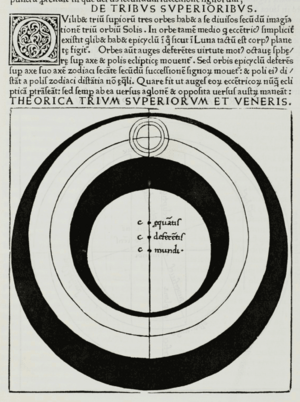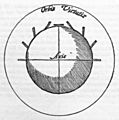Scientific revolution facts for kids
The scientific revolution was a special time in history, roughly from the 16th to the 18th century (around 1550-1700). It happened after the Middle Ages and the Renaissance. During this period, many amazing discoveries were made. New ideas completely changed how people understood the world. This era also led to what we call science today. Thanks to better printing presses after Johannes Gutenberg's time, more books and ideas could be shared.
Contents
Key Discoveries and Thinkers
This time was full of brilliant minds who challenged old ideas. They used new ways to observe and understand the world around them.
Galileo Galilei and Motion
Galileo Galilei was a very important scientist. He studied how things move, which is called kinematics. He showed that Aristotle's old ideas about gravity were wrong. A story says he dropped two iron balls of different weights from the Leaning Tower of Pisa. They both hit the ground at the same time! This experiment helped people think about physics in a new way.
Nicolaus Copernicus and the Sun
In 1542, Nicolaus Copernicus published a famous book called On the Revolutions of the Heavenly Spheres. In this book, he said that the sun, not the Earth, was at the center of the universe. This idea is known as Heliocentrism. Before this, most people believed the Earth was the center. Copernicus's idea changed how people saw our place in space.
Andreas Vesalius and the Human Body
Also in 1542, Andreas Vesalius published his book On the Structure of the Human Body. This book was very important for understanding the anatomy of the human body. It showed detailed drawings and descriptions of how our bodies are built. This helped doctors and scientists learn much more about health.
The Name "Scientific Revolution"
The philosopher Alexandre Koyré (1892–1964) was the first person to use the term 'scientific revolution' to describe this amazing time in history.
Images for kids
-
Portrait of Galileo Galilei by Leoni
-
Francis Bacon was a pivotal figure in establishing the scientific method of investigation. Portrait by Frans Pourbus the Younger (1617).
-
Diagram from William Gilbert's De Magnete, a pioneering work of experimental science
-
On this page Galileo Galilei first noted the moons of Jupiter. Galileo revolutionized the study of the natural world with his rigorous experimental method.
-
Isaac Newton in a 1702 portrait by Godfrey Kneller
-
The Royal Society had its origins in Gresham College in the City of London, and was the first scientific society in the world.
-
Portrait of Johannes Kepler
-
Isaac Newton's Principia, developed the first set of unified scientific laws.
-
Image of veins from William Harvey's Exercitatio Anatomica de Motu Cordis et Sanguinis in Animalibus. Harvey demonstrated that blood circulated around the body, rather than being created in the liver.
-
Title page from The Sceptical Chymist, a foundational text of chemistry, written by Robert Boyle in 1661
-
Newton's Opticks or a treatise of the reflections, refractions, inflections and colours of light
-
Otto von Guericke's experiments on electrostatics, published 1672
-
An ivory set of Napier's Bones, an early calculating device invented by John Napier
-
The 1698 Savery Engine was the first successful steam engine
-
Air pump built by Robert Boyle. Many new instruments were devised in this period, which greatly aided in the expansion of scientific knowledge.
-
Matteo Ricci (left) and Xu Guangqi (right) in Athanasius Kircher, La Chine ... Illustrée, Amsterdam, 1670.
See also
 In Spanish: Revolución científica para niños
In Spanish: Revolución científica para niños



















